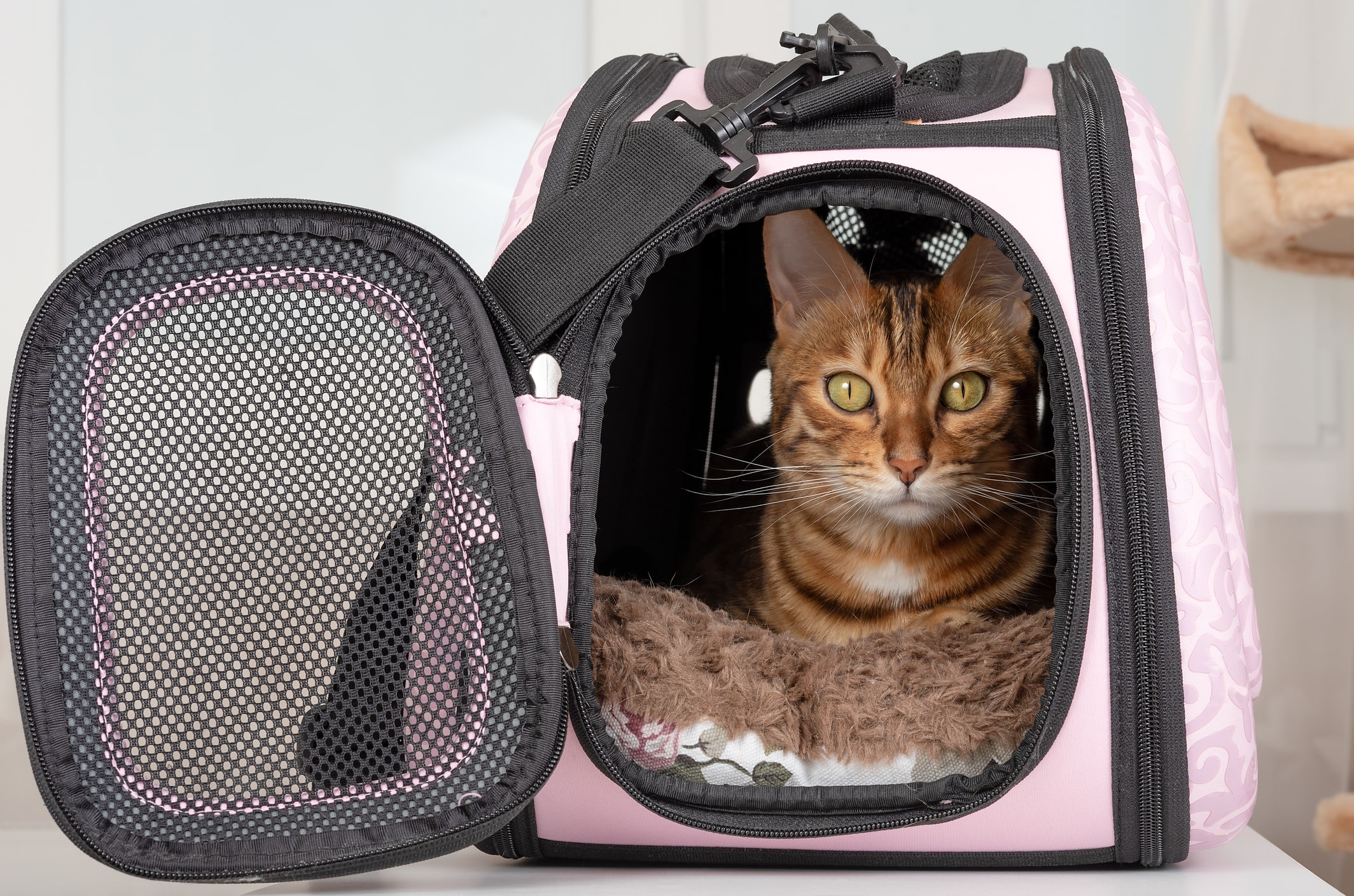Planning a vacation with a cat can be quite a challenge. My friend is getting ready to take a vacation with her cat, and it’s always a stressful experience. She starts getting anxious days before they leave, and I believe her cat senses her anxiety and doesn’t do well in the car. Seeing her struggle, I thought maybe I could do some research for her and share my findings with all of you.
Welcome to the world of feline-friendly travel! Traveling with your beloved cat can be a rewarding experience, whether it’s a short car trip or a long-distance move. In this guide, we’ll provide you with valuable tips and advice to ensure a smooth and stress-free journey for both you and your furry friend.
Preparing Your Cat for Stress-Free Travel
When it comes to traveling with your beloved cat, preparation is the key to a stress-free and enjoyable experience for both you and your furry companion. In this section, we’ll guide you through essential steps to get your cat accustomed to travel, choose the right cat carrier, and prioritize their safety during the journey.
Getting Your Cat Accustomed to Travel
- Introduce your cat to the concept of travel gradually.
- Start with short periods in the carrier at home.
- Extend the time to help them get used to it.
- Make the carrier inviting with a soft blanket, toys, and treats.
- Reduce travel anxiety and ensure your cat feels at ease during the trip.
Choosing the Right Cat Carrier
- Consider the type of travel (car ride or air travel).
- Choose a carrier that meets travel requirements.
- Ensure its well-ventilated and spacious.
- Add familiar bedding or clothing with your scent.
- Properly secure your cat during travel for their safety.
Safety First
- Always use a secure and well-ventilated carrier designed for travel.
- Ensure the carrier is latched securely to prevent accidental openings.
- Place identification tags on your cat’s collar with your contact information.
- Consider microchipping your cat for added security.
- Prioritize your cat’s safety and well-being during your travels together.
Cat Travel Essentials
Must-Haves for a Purr-fect Journey
In this section, we’ll discuss the cat travel essentials you’ll need for a successful and comfortable trip with your feline companion. From packing a comprehensive checklist to preparing for unexpected situations with an emergency kit, we’ve got you covered.
Packing for Your Cat
Before you embark on your journey, make sure you’ve packed everything your cat needs for a comfortable and enjoyable trip. From their favorite food and plenty of water to their cherished toys and cozy blankets, we’ll provide you with a comprehensive checklist to ensure you don’t forget a thing. Traveling with all the comforts of home can help your cat feel relaxed and secure during the journey.
Emergency Kit
Prioritize safety when traveling with your cat. Assemble a specialized first aid kit. This guide covers essentials from medical supplies to local vet contacts. Be prepared for emergencies and ensure your cat’s well-being. Here are the kit items:
-
Basic First Aid Supplies
- Sterile gauze pads and rolls
- Adhesive tape
- Cotton balls and cotton swabs
- Tweezers (for removing ticks or splinters)
- Antiseptic wipes or solution (e.g., hydrogen peroxide)
- Digital thermometer (note: normal cat temperature ranges from 100.4°F to 102.5°F)
- Scissors (blunt ended)
- Disposable gloves
-
Medications and Treatments
- A small bottle of saline solution (for cleaning wounds or eyes)
- Styptic powder or pencil (to stop bleeding from minor cuts or nail trims)
- Anti-diarrheal medication (consult your veterinarian for a cat-appropriate brand)
- Benadryl (for allergic reactions; consult your vet for dosage)
- Pain relievers (NEVER use human medications like aspirin or ibuprofen; consult your vet for cat-appropriate medications)
- A list of any medications your cat is currently taking.
-
Feeding and Hydration
- A few cans of wet cat food or pouches
- A small bottle of fresh water
- A collapsible food and water bowl
-
Comfort and Restraint Items
- A small blanket or towel (can be used for warmth, comfort, or as a makeshift stretcher)
- A spare leash and harness
- A soft muzzle (for restraint if the cat becomes aggressive due to pain or fear)
-
Identification and Records
- A copy of your cat’s vaccination and medical records
- A recent photo of your cat
- Identification tags with your current contact information
- A microchip number and the contact information for the microchip company (if your cat is microchipped)
-
Contacts and Information
- Emergency contact numbers (your vet, a 24-hour emergency vet clinic, and local vets at your destination)
- Poison control center number
- Basic first aid instructions for cats (available from many veterinary websites or books)
-
Miscellaneous
- A flashlight or headlamp (for visibility during nighttime emergencies)
- A carrier or crate (if you’re not already traveling with one)
- Waste bags or small trash bags (for cleanup)
-
Comfort Items (optional but recommended)
- Your cat’s favorite toy or comfort object
- Calming sprays or pheromone products (like Feliway) to reduce stress.
Review and update your emergency kit regularly, especially before a trip, to ensure that all items are present, in good condition and none are expired. Remember, it’s better to be over-prepared than underprepared, especially when the well-being of your feline friend is at stake. Safe travels!
Cat-Friendly Accommodations
Selecting the right place to stay is crucial for your cat’s comfort. Opt for lodgings that clearly state they’re pet-friendly. Check for specific pet amenities, inquire about their pet policies, and prioritize quiet areas. Ensure your chosen spot feels like a safe haven for your feline, making your travels smoother.
Ensuring a Calm and Comfortable Trip
In this section, delve into strategies designed to provide your cat with a serene and stress-free travel experience. Whether facing mild jitters or intense anxiety, we offer solutions to keep them at ease.
Calming Techniques
- Employ pheromone sprays replicating familiar, comforting scents.
- Play soothing background tunes for a peaceful ambiance.
- Think about anxiety wraps or vests as calming aids.
- Investigate herbal supplements or stress-reducing treats.
- Properly applied, these techniques significantly diminish travel-induced stress.
Addressing Travel Anxiety
- Be vigilant for signs like restlessness, excessive meowing, or retreat.
- Gradually introduce travel elements to ease their apprehension.
- If required, discuss anxiety medications or supplements with your vet.
- Familiar items, like a cherished toy or blanket, can offer solace and familiarity.
By pinpointing anxiety triggers and adopting preventive strategies, you pave the way for a relaxed journey for both you and your cat.
Traveling by Car with Your Cat
Navigate the challenges of a cat-inclusive road trip. We cover safety, entertainment, and trip planning essentials.
Planning a Road Trip
Plan meticulously for a memorable journey with your feline. Tips include mapping routes, scheduling cat breaks, and finding cat-friendly lodgings.
Car Safety Measures
Prioritize your cat’s safety. Discover ways to securely restrain them, from carriers to harnesses, ensuring a comfortable ride.
Entertainment and Distraction
Keep your cat engaged for a peaceful drive. From toys to activities, we offer strategies to make the journey pleasant for both.
Air Travel with Cats
In this section, we’ll provide you with all the essential information you need for a successful air travel experience with your cat. From understanding carrier regulations to preparing for the airport, we’ve got your air travel journey covered.
Flying with Your Cat
Before booking, confirm the airline’s requirements for cat travel. Choose approved carriers and ensure all essential documentation is in order. For more specifics, check our Q & A on air travel with cats.
Preparing for the Airport
Effortlessly traverse the airport with your feline friend. By understanding security protocols and focusing on comfort, your journey is streamlined and stress-free.
Conclusion:
Embarking on a journey with your feline companion can be a rewarding and enriching experience. By being well-prepared and making your cat’s comfort and safety a top priority, you can create memorable adventures together. With the right knowledge and a touch of patience, you’ll not only reach your destination but also strengthen the bond between you and your beloved cat. Safe travels!
Q & A
Q: How do cats use the bathroom when traveling?
A: When traveling, you should provide a portable or disposable litter box for your cat’s bathroom needs. During car travels, you can make periodic stops to offer your cat a chance to use the litter box in a secure area of the vehicle. For air travel, keep a compact litter box in the carrier or have one ready for use upon arrival at the destination.
Q: How long can a cat travel without peeing?
A: While cats can hold their bladder for 8 to 12 hours, it’s not recommended to let them go this long without giving them an opportunity to pee, especially during travels when they might be more stressed. For longer trips, ensure you offer regular bathroom breaks, ideally every 4-6 hours.
Q: How do you travel long distance with a cat in a car?
A: Traveling with a cat in a car for long distances involves several steps:
- Preparation: Acclimate your cat to the car and carrier weeks before the trip. Start with short drives and gradually increase the duration.
- Packing: Pack essentials including food, water, toys, an emergency kit, and a portable litter box.
- Comfort: Use familiar blankets or toys in the carrier for comfort. Consider playing soft, calming music during the ride.
- Safety: Always keep the cat inside the carrier while the car is moving. Never leave a cat alone in a parked car, especially in extreme weather.
- Breaks: Make periodic stops to offer water, food, and bathroom breaks.
- Overnight Stops: If you’re stopping for the night, ensure you choose a pet-friendly accommodation and keep your cat indoors.
Q: What paperwork do I need to bring my cat on a plane?
A: The required paperwork can vary based on airlines and destination. However, generally, you’ll need:
- A recent health certificate from a veterinarian (usually within 7-10 days of travel).
- Proof of up-to-date vaccinations.
- For international travel, you might need additional documents, such as import permits or proof of treatments (e.g., rabies).
- Any specific documents required by the airline or the destination country.
Always check with your airline and the country’s consulate/embassy you’re traveling to for specific requirements.
Q: Can I buy an airplane seat for my cat?
A: Most airlines don’t allow pets to occupy a regular seat. Instead, small pets in carriers can typically be stored under the seat in front of you as a part of the carry-on allowance. Some airlines do offer “cargo” or “checked pet” options where the cat is stored in the cargo hold in specialized pet containers. Always check with your specific airline for their policies and options available.
Q: How stressful is flying for cats?
A: Flying can be stressful for cats due to unfamiliar environments, sounds, and movement. Factors include the noise during takeoff and landing, changes in cabin pressure, and being confined to a carrier for an extended period. To minimize stress:
- Acclimate your cat to its carrier well in advance.
- Maintain a calm demeanor, as pets can pick up on your emotions.
- Consider consulting your vet for advice on safe calming solutions if needed.
Remember, every cat is different; while some might handle flying well, others might find it more stressful.
Q: How do you go through TSA with a cat?
A: When passing through TSA security with a cat:
- Remove your cat from its carrier.
- Hold your cat in your arms or secure them in a harness.
- Send the empty carrier through the X-ray machine.
- Walk through the metal detector or body scanner while holding or guiding your cat.
- Retrieve your cat’s carrier and place them back inside immediately after clearing security.
Note: It’s recommended to use a leash or harness to prevent escape attempts and to inform the TSA officer beforehand that you’re traveling with a cat.




